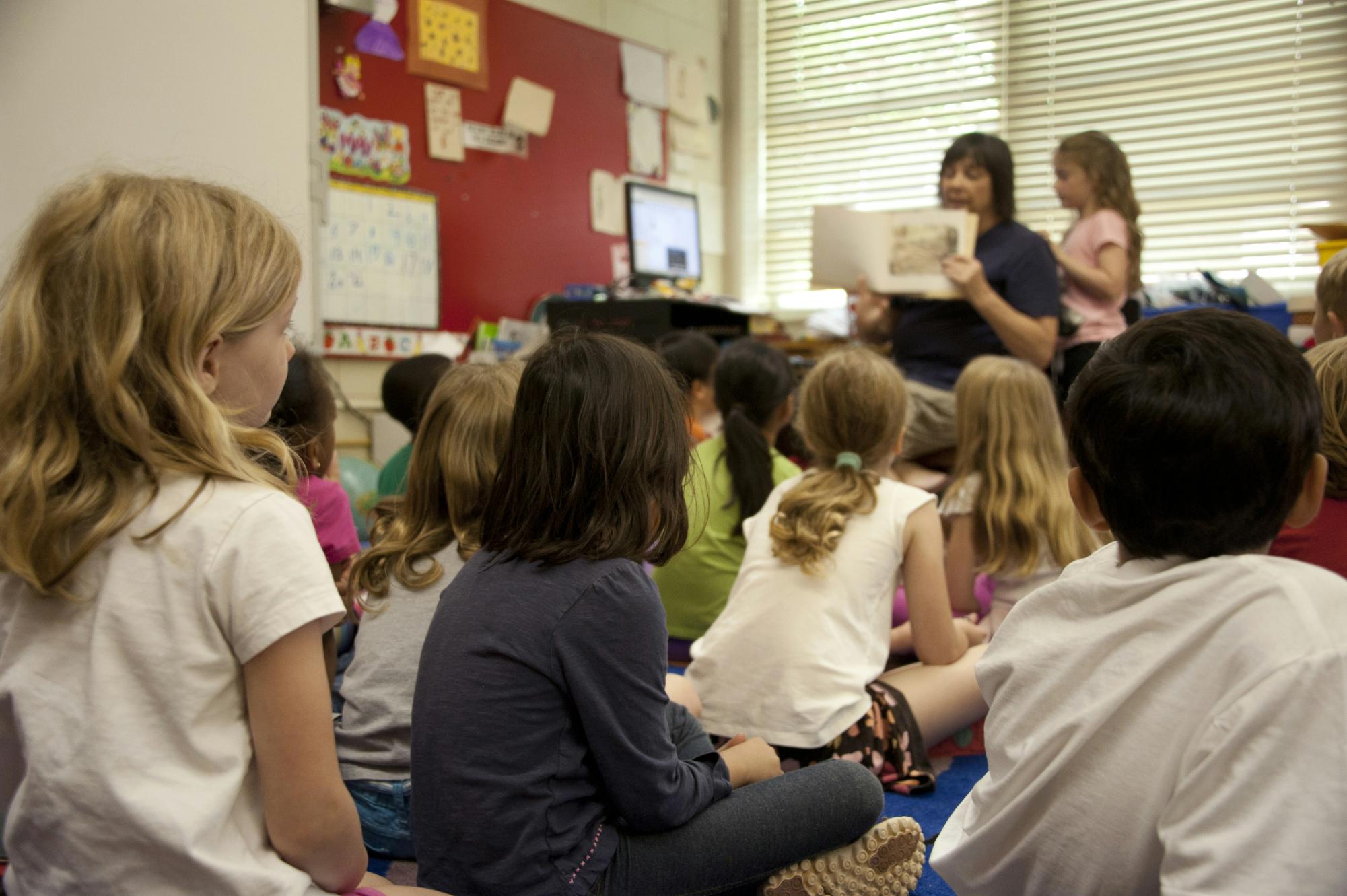Highly Capable in Seattle: Two Perspectives
When I read in the Seattle Times that Seattle Public Schools is closing its highly capable cohort program, I said some things to myself that are not printable.
For context: I was in the highly capable program at my elementary school in Everett from second to fifth grade. I was then fortunate enough to go to a private school for gifted students for middle school, and now I’m here at Shorecrest.
Putting me in hicap was the best educational decision my parents ever made. It would be an exaggeration to say that the hicap program saved my life, but honestly not by much. Hicap saved my motivation; it saved my interest in learning; it saved me from getting burned out any earlier than I did. It gave me teachers who understood how my brain worked. It gave me a community. It gave me skills that I would not have had to learn otherwise.
Are there problems with how hicap has been run? Yes. Has it historically been inequitable? Absolutely. But there are ways to fix these problems without throwing it away entirely. Ditching hicap without adequate support for a new model will only create more problems and hurt a different group of students.
One of the main arguments for getting rid of highly capable programs is that the old model is highly inequitable, serving a disproportionate number of white and Asian students, and failing to serve historically underrepresented groups. This is absolutely true. However, there are ways to fix this besides getting rid of the program completely. Seattle Public Schools has already implemented a new model for screening students for the highly capable program, making it easier for all students to access testing and removing some sources of bias. The Seattle Times article suggests that, anecdotally, they’ve started to see some improvements. If their primary concern is equity, why don’t they just wait a few years and see if making their screening process more equitable solves the problem?
There are also concerns about “siloing” students in separate classrooms. Proponents of combined classrooms argue that this would allow students to learn from more diverse peers, and that siloing does not reflect current best practices. Perhaps this is true, but in my experience, this often turns into “students who are ahead can help their classmates at the expense of their own learning” or “students who did not do the reading can learn from students who did do the reading, while the students who did do the reading are carrying the discussion and not getting anything out of it themselves.” “Learning from diverse peers” is a buzzword that sounds great in concept but often fails in practice.
I do want to acknowledge that separating hicap kids is in danger of creating a weird sense of elitism. This is a real problem, and it’s one of the main reasons why I will never try to claim that hicap is perfect. I don’t have an easy solution to this. However, I still strongly believe that you can’t try to change this unless you have an alternate solution that will actually work. From personal experience, I also believe that this dynamic is much easier to unlearn than what would have happened if I’d been in gen ed.
So what does Seattle Public Schools suggest as an alternative? They plan to put students in combined classrooms that serve all levels of students in the same classroom. Theoretically, teachers will be able to provide differentiation, giving different levels of work to different students depending on where they’re at, or providing multiple entry points so different students can jump in at the level that is right for them.
If this was done well, I actually think it could work very effectively. The problem is that doing this well would require more staffing, training, and support than most schools can realistically provide, especially given that SPS, like many Washington state school districts, is facing a major budget deficit right now. The Seattle Times reports that “Rocky Torres, the district’s associate superintendent of school and student support, said the new model doesn’t require additional funding or staffing.”
…
?!
I’m not sure how they think this is going to work, then.
Will there be no professional development to train teachers to work with students with different needs? Will there be no funding to allow teachers to develop new curricula? Will there be no extra staffing to allow teachers to work with multiple groups at the same time? Do they think teachers can wave a magic wand and figure this all out on their own, on top of their existing workload? It’s highly illogical to think that this will work.
This reminds me strongly of the Honors for All program here at Shorecrest. I wrote a very frustrated article for the Piper two years ago about the problems with the Honors for All program, and although my writing has definitely improved since then, I still agree with all the points I made in that article.
There were solid arguments for switching to Honors for All. If done effectively, all signs suggest that it could have worked out to the benefit of all students. Instead, Honors for All classes are now being taught at the non-honors level across the board, with few, if any, opportunities for differentiation. Honors for All has turned into Honors for None. This is what I fear will happen to highly capable programs.
(When I say this, I don’t mean that HFA made honors lose prestige; I mean that instead of bringing everyone up to the level of the honors classes, they brought everyone down to the level of the non-honors classes. I can’t speak to how Shorecrest’s curriculum compares to other schools, but I do know a bit about what the Shorecrest honors classes used to be like pre-HFA, and it’s pretty clear that this is a downgrade.)
Like with Honors for All, proponents of Seattle’s new hicap system suggest that it might help more students reach a higher level that they’ve historically been barred from. If it were executed well, this might very well be true. But just like with Honors for All, I fear that abruptly removing differentiation without adequate support will just take those opportunities away from everyone.
I am scared for the future of these little hicap kids in Seattle.
I am scared that they will end up in classrooms with little to no differentiation, that they will end up serving as classroom helpers at the expense of their own learning, that they will be bored out of their skulls. I am scared that they will lose their motivation for school and stop trying. I am scared that they will act out. I am scared that they will grow up never being challenged and struggle when they finally face a challenge for the first time, long after everyone around them has grown used to struggling.
I am scared that these little twice-exceptional kids (gifted students who also have a learning disability or are neurodivergent) will end up with teachers who haven’t been trained to look out for learning disabilities or how to support students with them. I am scared that they will have teachers who don’t know how to teach students with different needs, who decide to give them more work instead of deeper work and just make everything worse. I am scared that they will end up with teachers who don’t have the bandwidth to come up with adequate differentiation when they are already notoriously overworked and underpaid.
In short, I am scared that by trying to fix the inequities in highly capable programs without adequately planning and supporting a new model, Seattle Public Schools, and every district who follows them, will instead hurt the very students they were trying to help.
A few weeks ago, Seattle Schools announced their controversial decision to dismantle the HiCap program they’ve had in place for a number of years, replacing it with a more individualized approach to learning that will keep students of all levels in the same classroom. This announcement was filtered down through news and social media until it landed on my feed: “Seattle Schools is closing its highly capable cohort program.” People were understandably upset: many went through the original HiCap program and had a positive experience. However, though I have my fair share of concerns about Seattle’s plan, I believe this is a step in the right direction.
This change has been most commonly attributed to the lack of diversity found in HiCap programs both in Seattle and nationwide. According to The Seattle Times, “In the 2022-23 school year, 52% of highly capable students at SPS were white, 16% were Asian, and 3.4% were Black.” This lack of diversity is a reasonable concern: being around people who are different than you is a vital part of the social-emotional learning that takes place in elementary school.
In recent years, there’s been a push to diversify HiCap programs as a response to this issue. Last year, Seattle schools changed their testing policies in an attempt to make them more equitable. However, this lack of diversity is systemic and not easily removed from the program.
The origins of the HiCap program have been linked, especially in Washington, to the efforts made by schools to curb “white flight:” wealthy white families leaving school districts that were becoming integrated. Matt Halvorson, author and founder of Rise Up For Students, an organization dedicated to increasing equality in Washington state, has written multiple times on this topic. His 2019 article on the topic goes over some of the history of the program and why it is so difficult to diversify. These ideas are echoed by The Hechringer Report, a nonprofit journalistic organization that reports on issues of inequality in education. They suggest that even schools that have moved to a far more inclusive model still struggle with racial inequity in their HiCap classes. Again, this lack of diversity in the classroom is extremely detrimental to students, especially when one specific class fails to reflect the demographics of a greater school or district.
Diversity is an undeniable issue within the HiCap program. However, many sources stop there and present it as the only issue, which is far from true. In truth, the concrete benefits of separate HiCap programs are limited and outweighed by the benefits seen in fully inclusive classes. I do not deny that some students are more advanced than others and require different instruction, however, these extensions do not need to (and should not) occur in fully separate classrooms. Learning to work with people who think and learn differently than you is a crucial skill for success in adulthood: it teaches problem-solving solving, compromise, and can strengthen your own understanding of a concept. So much of early learning goes beyond the information being taught, and by separating students by ability level we are robbing them all of these vital opportunities. In order to move forward with our education systems in a way that is beneficial to all students, we must question the systems we are used to and challenge our assumptions about education.
The Pygmalion effect is the idea that when we have preconceived notions about a person or thing, we act in a way that causes the behavior we’re expecting. In other words, it’s a self-fulfilling prophecy. A famous 1968 experiment by Rosenthal and Jacobsen demonstrates this effect in a classroom setting. In the original study, sixth-grade students were given a test designed to identify “bloomers” in a class (students who would show significant improvement throughout the year), and this information was passed on to the teachers. When the students were given the test again at the end of the year, the “bloomers” showed the expected growth. Here’s the twist: the “bloomers” were randomly selected. Their original test scores had no bearing on their predicted success. This study has been replicated in many different contexts to the same conclusion: we see what we expect.
HiCap selection, of course, is not random. However, the principle of Rosenthal’s hypothesis stands. How much of educational success is intrinsic? How many general education students would thrive if held to a HiCap standard, but were never given the chance? The goal should be elevating all students to the highest possible level, not assuming their abilities are fixed based on observations made as early as first and second grade. This is the basis of Seattle School District’s plan for the upcoming school year.
I encourage you to read through Seattle’s publicly available model if you haven’t already. The best way to combat the misrepresentation and oversimplification of this change is to go straight to the source. An understanding of the concrete changes that will be made is crucial to any criticism or endorsement of a new program. That being said, it is also important to find out where these models come from and why they’ve been implemented the way they have.
Seattle Schools is transitioning to a program inspired by an educational framework called Multi-Tiered Systems of Support (MTSS). It was originally designed to help integrate special education classes into fully inclusive general education classrooms (a related battle that warrants its own article), but can be adapted to take the needs of all students into consideration: including those working at a higher than average level.
The basic structure is made up of 3 tiers of support based on the needs of a student at a given time. These levels have been described differently in different contexts, but the most general version is as follows. Level 3 supports are typically aimed at students with intense needs; those we typically think of as “special ed.” Level 2 supports are aimed toward students who are roughly at grade level; they may need some extra practice or help from a teacher. Level 1 supports are aimed at students who already understand the material and need resources to deepen their understanding; or, HiCap kids. Mind the language though: there are no level 3 kids, just level 3 supports. Ideally, students move fluidly throughout supports: maybe you’ll be in a level 2 group for math but a level 1 group for English.
This structure allows students to be in one environment for most of the school day and interact with each other while also receiving the support they need. MTSS and similar systems also address the three-dimensional needs of students: think about the kids who excel in one subject but didn’t test highly enough in another to get into a HiCap program. In our current system, they’ll either end up bored half the time in a gen ed classroom or struggling half the time in a HiCap one. A holistic approach is essential to the success of all students. No human being is perfect or terrible at everything, especially elementary-aged kids: they need room to grow and be challenged regardless of where they started.
These systems aren’t new: we’ve been researching and improving them for years. I encourage you to look further into Universal Design for Learning, an inclusive model for education that aims to support the varied needs of students and is slowly being adopted all across the country. The changes Seattle School District is making did not spawn out of nowhere. They are not immune to criticism, but that criticism must come from a place of understanding and research.
Change requires full commitment and support at an admin level: sticking every student in one classroom with no support isn’t inclusion, it’s abandonment. This is where my primary concern with Seattle School District’s model comes in: providing individualized plans will take a lot of time and effort from teachers as well as training from higher-ups in the district. It is imperative that this support is provided for teachers, otherwise the entire program will collapse.
Seattle has the chance to do something great: they have the chance to lead the way for inclusive education everywhere. This means, however, that they have no room for mistakes. If Seattle fails to introduce this program with the time and support it needs, it will fail. Students will suffer, backlash will grow, and the public consensus will be that inclusion doesn’t work. If they succeed, this will be a massive step forward for inclusive education that could have positive impacts on generations to come. I ask you to stay open-minded throughout this process and to understand that if Seattle fails, it will likely have been a failure of implementation, not inclusion itself.
The best way to do this is through continued education. If you’ve read this far in my article, you’re already on the right track. Do not fall into the all too common trap of the status quo: question the systems you are presented with and always wonder how they can be made better. These conversations are difficult and uncomfortable, but growth is never easy. It is only through listening to each other and working to understand other perspectives that we can find solutions that benefit everyone. We must understand that there is no student who cannot thrive in a general education classroom when given the opportunity and support. I wish Seattle Schools the best of luck in the coming years and I hope for the sake of all students that they are successful in their journey towards inclusion.











